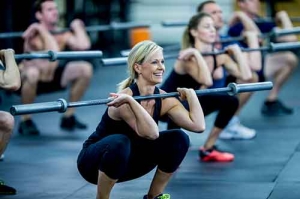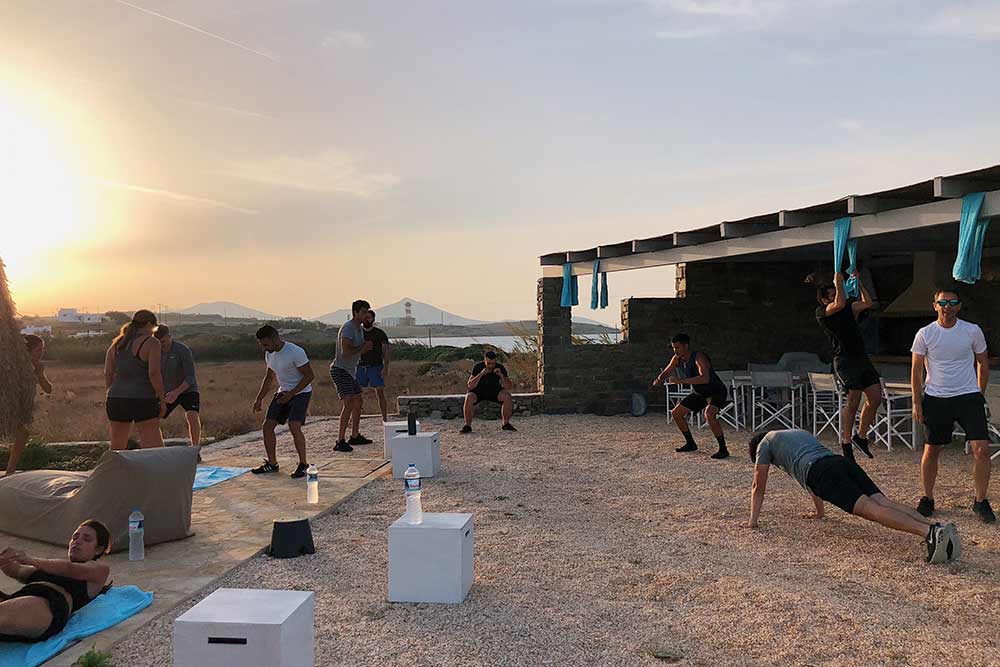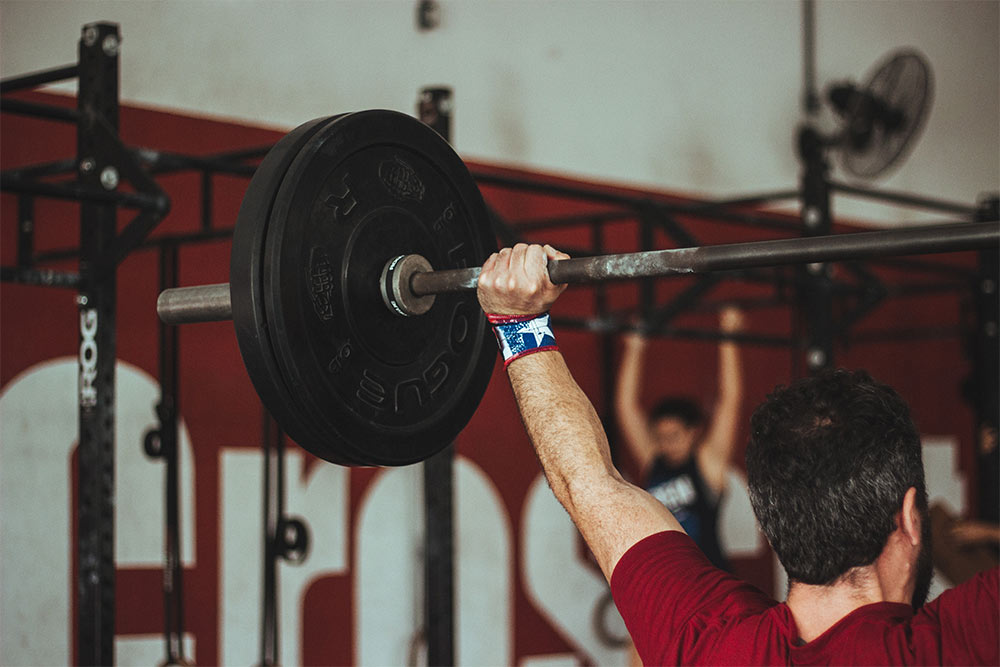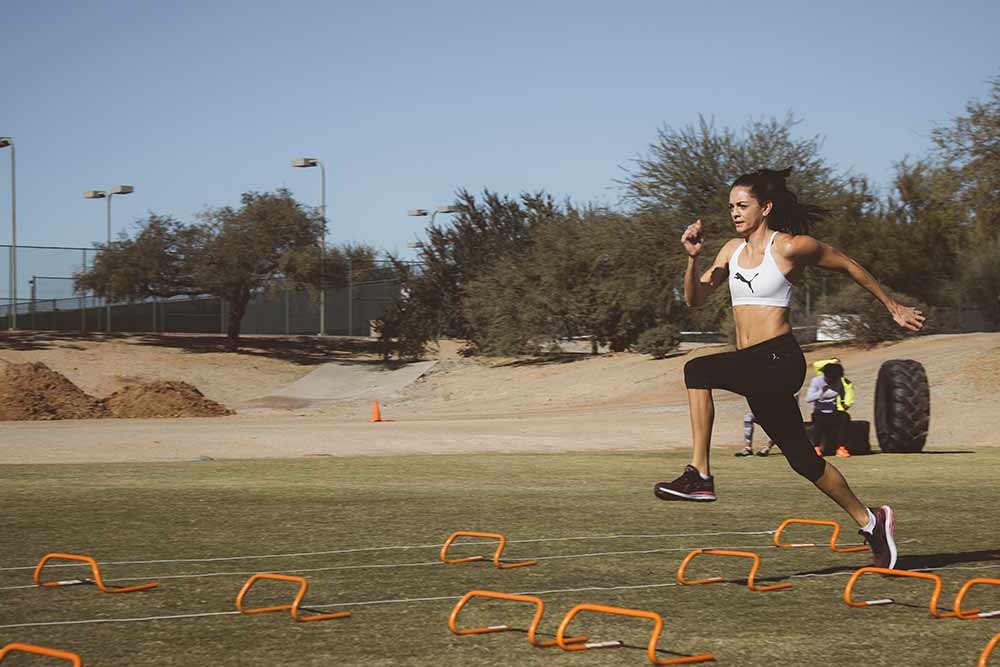3 Benefits of CrossFit

Alyssa Biawolas
CrossFit remains to be one of the most popular and most controversial fitness trends. It focuses on varying functional movements in a high-intensity setting (for a full definition see here). In the article, you will learn 3 benefits of CrossFit.
HIIT challenges people to improve their fitness by building their strength and enhancing their conditioning during an hour-long class. Since 2001, men and women around the world, there are about 14,000 CrossFit affiliates worldwide, have been joining CrossFit gyms in an effort to get or stay healthy and fit.
Since it can be considered an option for high-intensity interval training (HIIT), HIIT has also become one of the top fitness trends in the last 5 years (Amadio et al., 2018). Scientific data surrounding CrossFit is sparse. A research team worked to analyze the findings of scientific literature on CrossFit in a systematic review and meta-analysis.
In addition to fitness, CrossFit is known for its focus on building a community within the gym. These gyms are places where people meet, socialize, build camaraderie, and support one another along the road to fitness. CrossFit claims that its gyms are about the community as well as fitness. And, as a cultural anthropologist studying branded functional fitness, I would say they deliver.
In a master’s thesis, Harvard Divinity School students included CrossFit as one of ten places that “Millennials gather” instead of traditional religious institutions (for a New York Times write-up of the study see here). In other words, CrossFit is a fitness practice that seeks to build a community around strong bodies and fit selves, and for more than just Millennials.
The Study
 In the study, effect sizes with 95% confidence interval were calculated and heterogeneity was assessed using a random-effects model. Researchers analyzed studies from PubMed, Web of Science, Scopus, Bireme/MedLine, and SciELO online databases, looking for articles that contain benefits of CrossFit.
In the study, effect sizes with 95% confidence interval were calculated and heterogeneity was assessed using a random-effects model. Researchers analyzed studies from PubMed, Web of Science, Scopus, Bireme/MedLine, and SciELO online databases, looking for articles that contain benefits of CrossFit.
This included studies with variables from short-term intervention studies, with participants, split into distinct gender groups to maintain consistency.
Male participants (60%) were utilized more so than females (40%). CrossFit samples were composed of adolescents, adults and the elderly. The sample profile included 6% competitive CrossFit pro athletes, 63% trained individuals who participated in CrossFit for more than 6 months, 22% physically active individuals, and 9% sedentary individuals.
Related Article: Does Weightlifting Make You Smarter as You Age?
The Results
A low level of evidence and a high risk of bias was found in a majority of studies analyzed, indicating a large need for future research that includes robust and quality evidence of CrossFit advantages (Amadio et al., 2018).
In the CrossFit literature review, studies were found to report on body composition, psycho-physiological parameters, musculoskeletal injury risk, life and health aspects, and social behavior. Five CrossFit fitness domains such as cardiovascular/respiratory endurance, stamina, strength, flexibility, and power were found in short-term intervention studies.
The remaining fitness domains, speed, coordination, agility, balance, and accuracy were lacking in short-term as well as long-term intervention studies.
Because of this, a gap must be filled in the scientific literature on CrossFit training in terms of training load. Managing the training load and reducing injury risk could be more appropriately used to support the practice of CrossFit (Amadio et al., 2018).
Related Article: Predict Overuse Injuries in CrossFit Athletes
The positive outcomes of CrossFit go beyond the sole scientific benefits of exercise, however, the scientific benefits are overwhelmingly positive. CrossFit fitness domains such as cardiovascular/respiratory endurance, stamina, strength, flexibility, and power are often used as interventions for performance in CrossFit exercise design.
Additional domains such as speed, coordination, agility, balance, and accuracy, can be better incorporated into an average CrossFit exercise program. CrossFit heavily impacts body composition in parameters such as body mass index, relative body fat, fat mass, lean body mass, and waist circumference (Amadio et al., 2018).
Physical health benefits of CrossFit:
- Physical performance and overall body composition
- Cardiovascular health
- Insulin sensitivity
- Blood pressure
- Lipid profile
- Bone development
- Improved sleeping patterns
- Combat specific aging factors in skeletal muscle
- Type 2 diabetes
- Improved cognitive abilities
- Self-esteem
Benefits of CrossFit That Go Beyond Exercise
 In the scientific literature, Amadio et al. (2018) found:
In the scientific literature, Amadio et al. (2018) found:
- Higher levels of a sense of community between CrossFit friends, peers, and trainers
- Higher levels of satisfaction surrounding a physical activity
- High levels of motivation to participate in exercise and physical activity as well as motivation to return to
Amadio et al. (2018) assessed the motivation for physical exercise in their meta-analysis. The groups used for comparison were CrossFit, resistance exercise, alone, and individuals who train with a personal trainer.
In the CrossFit group, enjoyment, challenge, and affiliation were identified as factors for motivation and adherence more than all other training groups.
The sense of enjoyment and challenge are often used as descriptors for sports practice within a team setting In addition to the research provided by Amadio et al. (2018), research shows that the supportive group environment not only contributes to a sense of community but also serves as the greatest tool for exercise adherence. Individuals that find self-motivation to be a struggle can benefit from the characteristics of CrossFit.
People that use CrossFit as their exercise program describe CrossFit as a lifestyle choice. This is due to the fact that CrossFit embeds ideas of holistic nutrition, in which daily diet challenges inspire participants to develop healthy eating habits, as well as personal development.
Since personal development is embedded into the CrossFit training program, coaches and trainers are motivating and inspiring members of the community, offering tips and guidelines for healthy living.
Related Article: 6 Tips to Fuel Your HIIT Nutrition Plan
Plan your CrossFit Program
Based on best-practice literature incorporating the following –
- Utilize all ten fitness domains – cardiovascular/respiratory endurance, stamina, strength, flexibility, power, speed, coordination, agility, balance, and accuracy
- Find your favorite CrossFit environment
- Include some of your own friends for further motivation to adhere to exercise
- Create a nutrition plan that works for your body
- Avoid injury – give your body the rest it needs
- Participate in active recoveries such as restorative yoga, swimming, or cycling
Related Article: CrossFit For All Ages
Reference
Amadio, A.C., Bottaro, M., Bourgeois, F., Claudino, J.G., Filho, C.A., Gabbett, T., Hernandez, A.J., Mezencio, B., Miranda, R.C., Serrao, J.C., Soncin, R., & Souza, H. (2018). “CrossFit Overview: Systematic Review and Meta-analysis.” Springer – Sports Medicine-Open, 4, 11.
JOIN OUR NEWSLETTER
You Might Like:










